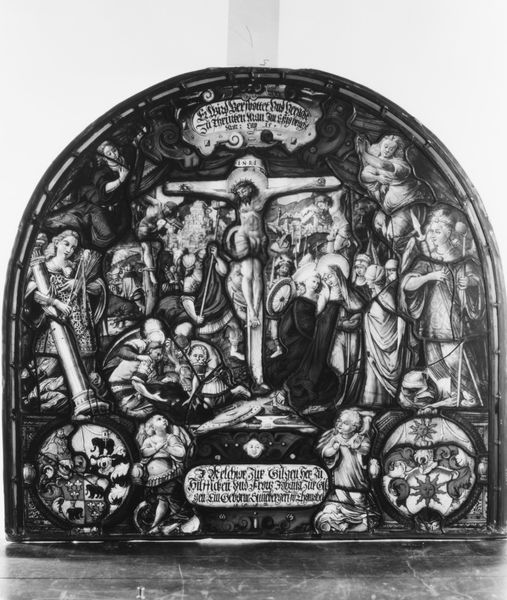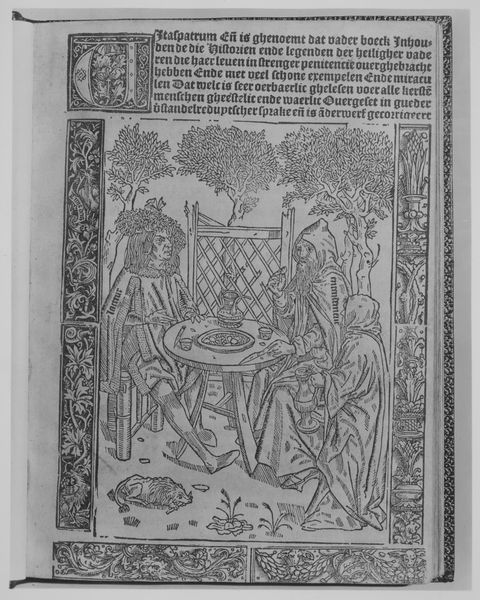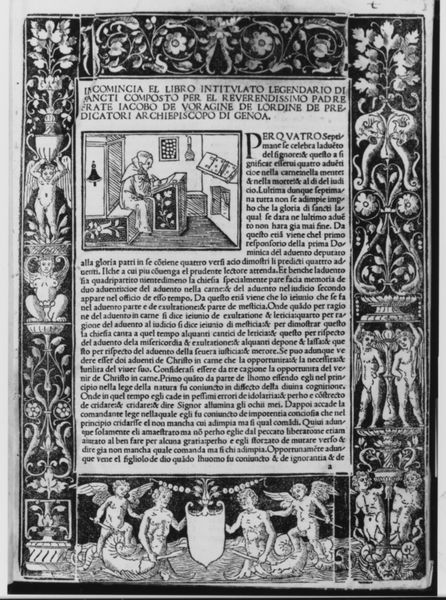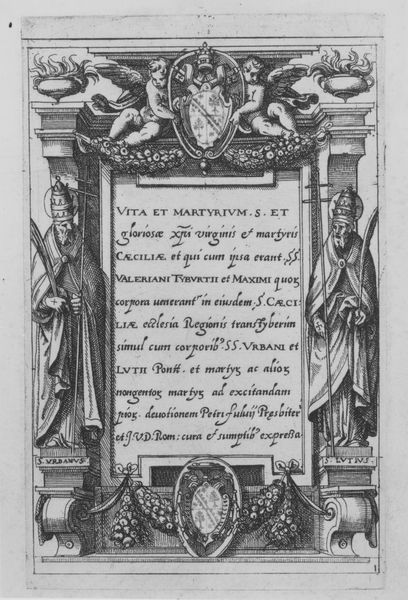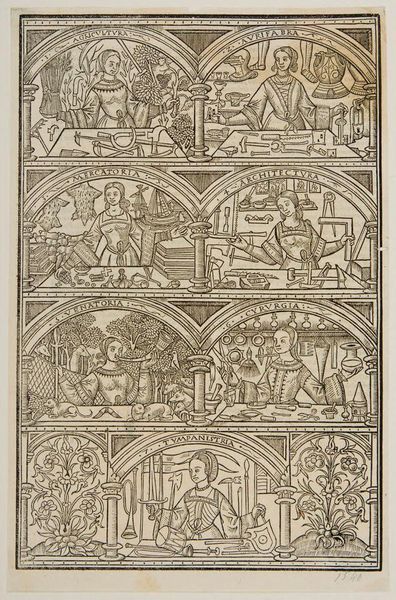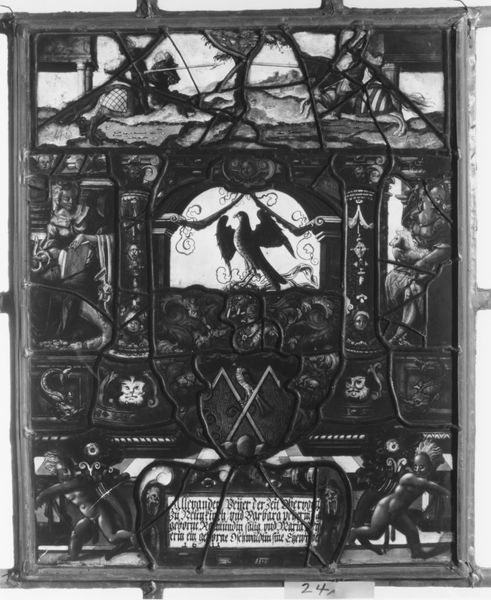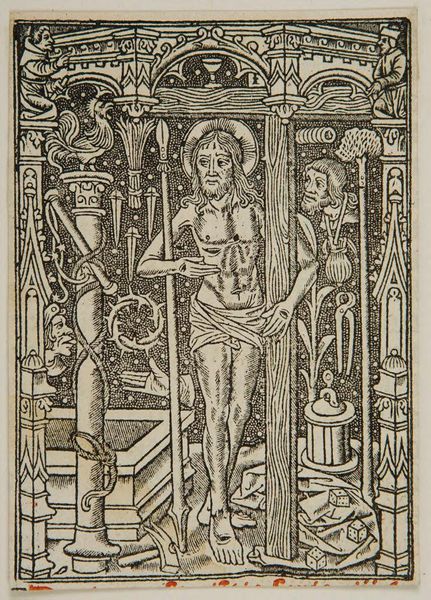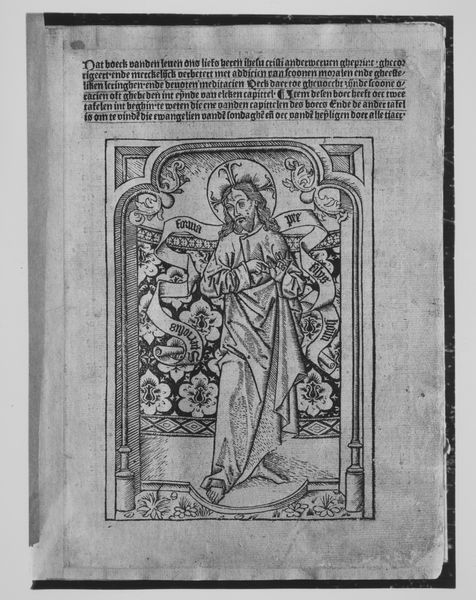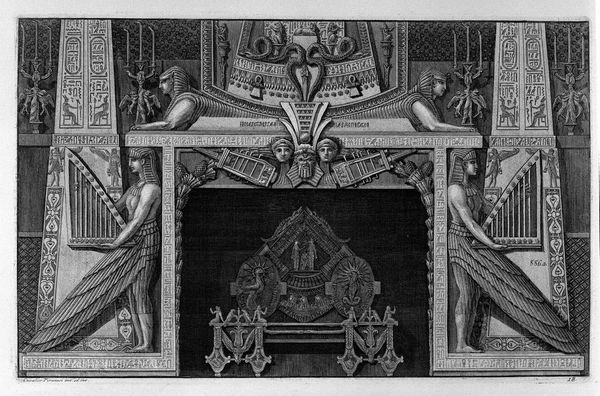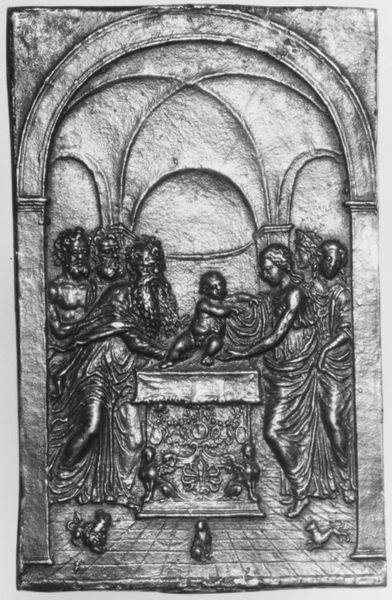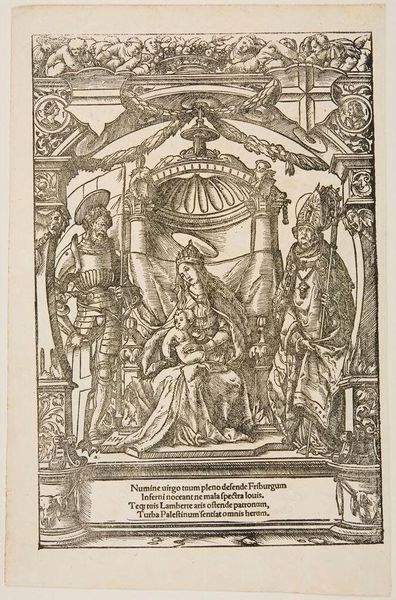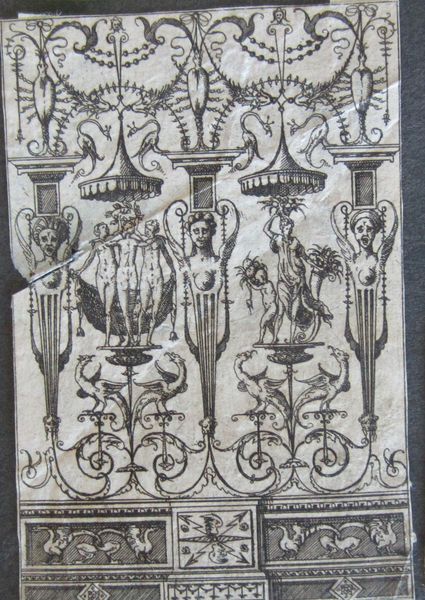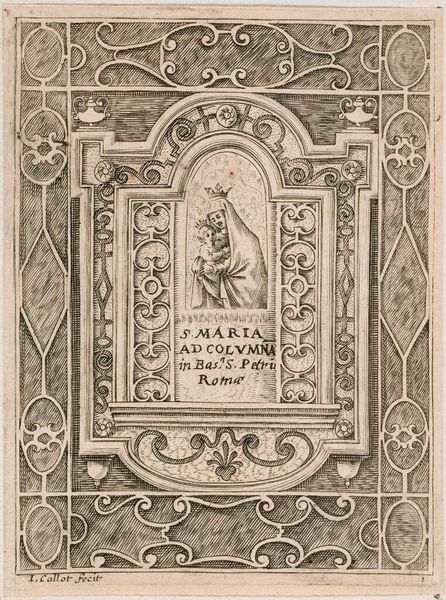
Sacred Monogram with the Trinity, Instruments of the Passion, and Saints 1485 - 1505
0:00
0:00
drawing, tempera, painting, print
#
drawing
#
tempera
#
painting
# print
#
sculpture
#
figuration
#
history-painting
#
early-renaissance
#
miniature
#
christ
Dimensions: image: 21 3/8 x 12 5/8 in. (54.3 x 32.1 cm) sheet: 21 3/4 x 13 1/4 in. (55.2 x 33.7 cm)
Copyright: Public Domain
Editor: Here we have "Sacred Monogram with the Trinity, Instruments of the Passion, and Saints," created by an anonymous artist sometime between 1485 and 1505. It’s a mixed media work combining tempera, drawing, and print techniques. What strikes me most is the incredibly intricate composition; it's almost overwhelming. What do you see in this piece from a formal perspective? Curator: Indeed, the composition is fascinating. Notice how the artist utilizes the monumental "M" to structure the entire pictorial space. This initial scaffolds a visual hierarchy. We can examine how line, shape, and the positioning of figures guide the eye. Where does your eye go first and why? Editor: I think my eye is immediately drawn to the Crucifix at the very center. Then I suppose, down the vertical axis and out into each little tableau? Curator: Precisely. The Crucifix acts as the nucleus, the apex, from which all other forms emanate and around which they orbit. Reflect on the implications of a centralised subject that then determines the relationships of everything surrounding it. Note the calculated arrangements around that vertical, which pull visual weight evenly toward left and right sides. What feeling does it give you, beyond the content represented? Editor: It creates a sense of balance, even order. Even though there are many figures, they’re harmoniously organized and contribute to the larger geometric unity of the piece. Curator: The artist employs linear perspective within the smaller scenes, creating depth, juxtaposed with the flatness of the overall image. What effect does it create? Editor: That contrast flattens the artwork as a whole. It keeps reminding you it’s an image on a surface, a created and arranged set of artful components. Curator: Yes, a deliberate choice. A flattening like this reinforces the picture plane itself. It becomes less a window onto a scene, and more a structured set of deliberate decisions. The meticulous details and deliberate ordering contribute to the painting's overall impact and encourage repeated viewing to appreciate its form and construction fully. Thank you for your excellent perspective. Editor: I appreciate the fresh insight; seeing it purely from that compositional and constructed viewpoint opens it up more than I would have thought!
Comments
No comments
Be the first to comment and join the conversation on the ultimate creative platform.
